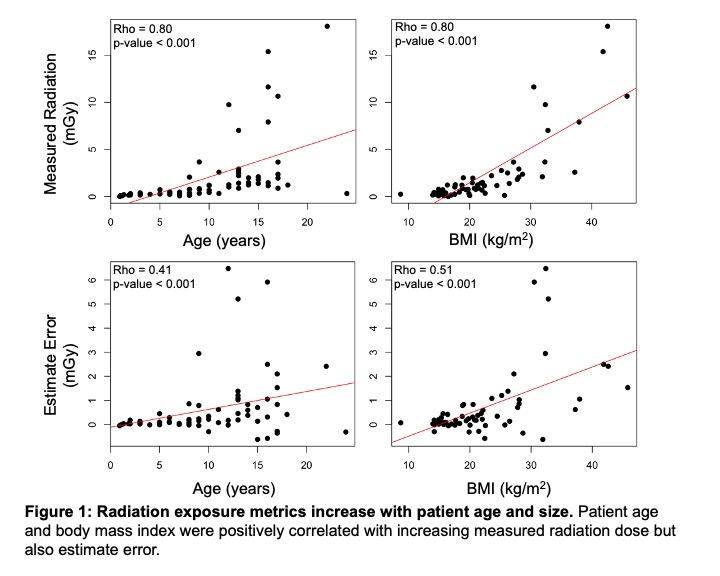Characterization of Entrance Skin Dose during Abdominal Radiographs for Pediatric Urology Patients
Christopher John Staniorski, MD1, Alyssa Paul, BS2, Rajeev Chaudhry, MD1.
1UPMC Children's Hospital of Pittsburgh, Pittsburgh, PA, USA, 2Butler University, Indianapolis, IN, USA.
BACKGROUND: Abdominal radiograph is used in the evaluation of bowel and bladder dysfunction in Urology. A true radiation dose per exam is not known as current methods estimate doses from x-ray outputs. This study aims to characterize skin entrance doses of radiation for AR ordered by Urologists and identify targets for radiation reduction.
Methods: Urology patients undergoing an abdominal radiograph were prospectively recruited. A dosimeter was fixed to the patientís navel to measure skin entrance doses. Estimated doses were subtracted from measured doses to calculate an estimate error and correlated to patient characteristics. The primary outcomes were measured dose and estimate error.
Results: Sixty-nine patients were included with an average age of 9.96 years (SD 5.4). Concern for bowel and bladder dysfunction was the reason for 89.9% of exams performed. Patients underwent a median of 2 images (range 1 - 4) with 25.7% of exams using medium or high dose strength. The median measured and estimated doses of radiation absorbed at skin level were 0.77 mGy (IQR 0.3 - 2.0) and 0.63 mGy (IQR 0.3 - 1.2), respectively. This 27% increase in median measured radiation doses over estimates was significant on paired comparison (p < 0.001). Measured radiation dose as well as estimate error showed a significant positive correlation with age, height, weight and BMI (p < 0.001, Figure 1). On multivariable analysis, the use of a higher dose strength was predicted by male gender (OR 7.8, p = 0.01) and increasing BMI (OR 1.2, p < 0.01) while increasing age predicted the acquisition of more than one image (OR 1.7, p < 0.01).
Conclusions: Measured radiation dose was significantly greater than estimates. Older, larger patients experienced more images and higher dose strengths leading to higher radiation exposure and greater deviation from estimated exposure. Further study should evaluate standardization of protocols to limit image number and dose.

Back to 2023 Abstracts
